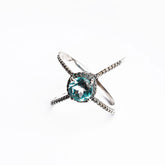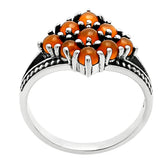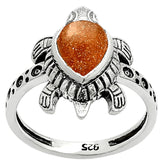The History and Meaning of Pearls
Pearls have fascinated people for thousands of years. They are admired not only for their beauty but also for their rarity and symbolism. Let's explore the rich history and enduring allure of pearls, including different types like keshi pearls, and learn about their significance alongside other notable gemstones such as mexican matrix opals, carved pendants, raw gemstones, and ruby stones.
Ancient Origins and Cultural Importance
Pearls have been cherished since ancient times. Civilizations like the Egyptians, Greeks, and Romans valued pearls greatly. In those early days, pearls were symbols of wealth, power, and social status. The ancient Greeks believed that pearls were tears of happiness from Aphrodite, their goddess of love. Romans linked pearls with Venus, their goddess of love. Pearls adorned crowns, jewelry, and ceremonial clothes of kings and nobles.
Types of Pearls
Pearls, celebrated for their natural beauty and cultural significance, come in various forms that captivate with their uniqueness and allure. Here’s an exploration of different types of pearls, each imbued with its own charm and appeal.
Keshi Pearls
Keshi pearls are a fascinating anomaly in the world of pearls. These pearls are formed accidentally as a byproduct of cultured pearl production. When a mollusk rejects the implanted nucleus but continues to produce nacre (mother-of-pearl), small pearl sacs form without a nucleus. As a result, Keshi pearls are composed entirely of nacre, giving them exceptional luster and unique shapes. They can range from small, irregular pearls to larger, baroque shapes, often displaying a spectrum of natural colors from creamy whites to soft greys and even deep golds. Due to their rarity and organic formation, Keshi pearls are highly prized by collectors and jewelry enthusiasts alike for their natural elegance and individuality.
Mexican Matrix Opals
Mexican matrix opals represent a distinctive category of gemstones that showcase nature's artistic hand. These opals form within host rocks, resulting in captivating matrix patterns that resemble intricate spider webs or veins of color running through the stone. Unlike traditional opals that exhibit a play of color, Mexican matrix opals are valued for their vibrant hues and bold patterns. They are often cut into unique shapes and sizes, preserving the natural matrix patterns that make each piece one-of-a-kind. Mexican matrix opals are favored by jewelry designers for their artistic appeal and ability to create statement pieces that highlight the natural beauty of the gemstone.
Carved Pendants
Carved pendants offer a blend of craftsmanship and artistic expression in the world of jewelry. These pendants feature intricate designs carved into gemstones or natural materials such as jade, turquoise, and coral. Skilled artisans meticulously carve detailed motifs ranging from floral patterns and animals to mythical creatures and cultural symbols. Carved pendants not only showcase the natural beauty of the material but also tell stories and convey symbolic meanings. They are cherished for their craftsmanship and ability to add a personal touch to jewelry collections, making them popular choices for those seeking unique and meaningful adornments.
Raw Gemstones
Raw gemstones celebrate the untouched beauty of minerals in their natural state. These gemstones are prized for their raw textures, unpolished surfaces, and vibrant colors that highlight their natural formations. Raw gemstones can include diamonds, emeralds, sapphires, and other precious and semi-precious stones. Each raw gemstone is unique, displaying inherent characteristics such as crystal formations, color zoning, and natural inclusions that enhance their appeal. Jewelry designers often incorporate raw gemstones into avant-garde pieces that appeal to individuals seeking organic and earthy aesthetics in their jewelry.
Ruby Stones
Ruby stones stand out for their deep red color and rich symbolism throughout history. These precious gemstones are revered for their association with passion, vitality, and love. Rubies are part of the corundum family of minerals, known for their exceptional hardness, second only to diamonds on the Mohs scale. Fine rubies exhibit a vivid red hue, often referred to as "pigeon's blood," which commands premium prices in the market. Rubies have been prized by royalty and nobility for centuries, symbolizing power, protection, and prosperity. Today, ruby stones continue to be cherished for their beauty and significance, adorning jewelry pieces that convey strength, courage, and a timeless allure.
Conclusion
In conclusion, pearls have a timeless allure that crosses cultures and generations. From their ancient beginnings as symbols of wealth and status to their modern interpretations in jewelry, pearls continue to enchant and inspire. Whether you're fascinated by the luminous beauty of keshi pearls, the vibrant hues of mexican matrix opals, the intricate designs of carved pendants, the raw appeal of raw gemstones, or the passionate allure of ruby stones, each gemstone carries its own story and significance in the world of jewelry.
Explore the beauty and symbolism of pearls and gemstones, and discover why these natural treasures have captivated people for centuries. Embrace the elegance and meaning they bring to jewelry, celebrating life's special moments with timeless beauty and sophistication.














